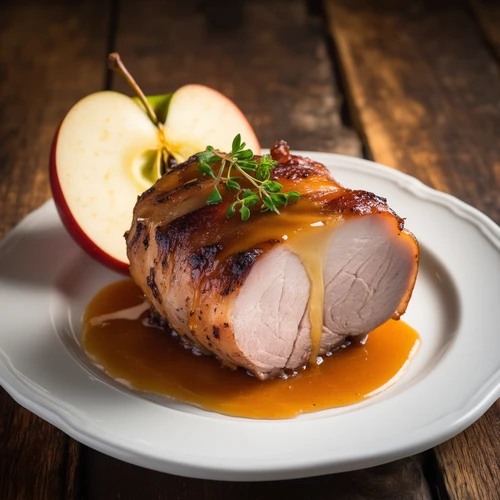Apple is often associated with sweet desserts, but its crisp, tart profile makes it an excellent ally in savory dishes. A well‑chosen apple can add moisture, a subtle sweetness, and a burst of acidity that balances rich meats and hearty vegetables.
When selecting an apple for dinner, aim for varieties that hold their shape and flavor during cooking. The following apples have proven themselves in seasonal menus around the world.
- Granny Smith – A firm, green apple with a bright, slightly bitter bite. Its acidity cuts through fatty cuts like pork or beef, preventing the dish from feeling heavy.
- Honeycrisp – Known for its juicy crunch and balanced sweet‑tart flavor. Honeycrisp slices stay crisp when sautéed, making them ideal for pan‑sautéed greens or as a garnish on roasted poultry.
- Braeburn – A medium‑acid apple that softens gently while providing a subtle spice. Braeburn’s robust flavor makes it a favorite in stews and braises.
- Fuji – Sweet but firm, Fuji lends a gentle, honeyed glaze when caramelized, perfect for topping grilled steak or pork tenderloin.
- Gala – A milder sweetness with a fine texture. Gala slices become tender in slow‑cooked dishes without losing their shape, making them great for savory pies or stuffing.
Pairing apple varieties with protein can elevate a meal into an experience. Pair a Granny Smith with pork for a classic savory contrast, or use Fuji to add a sweet finish to a duck breast. For vegetarian nights, sauté Honeycrisp slices with onions and herbs to create a crunchy topping for roasted root vegetables.
Below is a simple recipe that showcases the versatility of apples, using a popular variety in a savory setting. The Apple‑Stuffed Pork Tenderloin brings a bright, fresh note to an otherwise savory dish.
Ingredients- Apple – Fuji, 120 g
- Pork tenderloin – 500 g
- Onion – 75 g
- Garlic – 15 g
- Fresh sage – 5 g
- Olive oil – 25 g
- Salt – 5 g
- Black pepper – 2 g
- Apple cider – 30 g
Instructions: Preheat the oven to 180 °C. Dice the Fuji apple and onion, mince the garlic, and finely chop the sage. In a small pan, heat olive oil over medium heat, sauté the onion and garlic until translucent, then add the apple and sage. Cook until the apple softens, about 5 minutes. Season with salt and pepper. Let the mixture cool slightly, then slice a pocket into the pork tenderloin lengthwise, taking care not to cut all the way through. Spoon the apple mixture into the pocket, close with a toothpick and secure with kitchen twine. Brown the pork in a hot skillet for 2–3 minutes per side, then transfer to the oven and roast for 20 minutes. Finish by deglazing the skillet with apple cider, simmering until reduced to a glaze, and spooning over the tenderloin before serving.
This dish exemplifies how a careful choice of apple not only complements the meat but also enhances the overall flavor profile. The slight tartness from the apple offsets the richness of pork, while the apple’s natural sugars create a pleasant caramelization that brightens each bite.
In addition to the pork recipe, apples can be used in sauces, compotes, stuffing, and even as a subtle garnish. Whenever you’re planning a dinner that needs a hint of natural sweetness and a touch of acidity, consider adding the right apple variety.
Enjoy experimenting with these options and discovering which apple becomes your go‑to centerpiece for savory meals!


